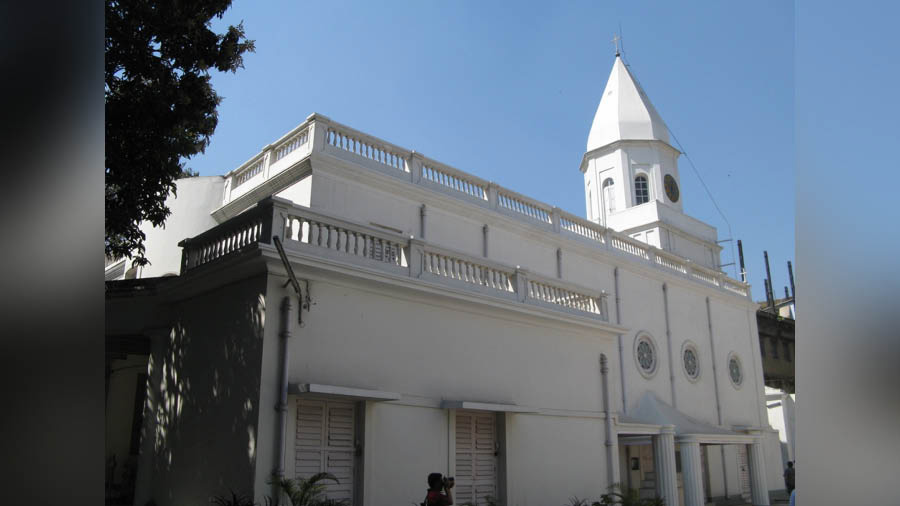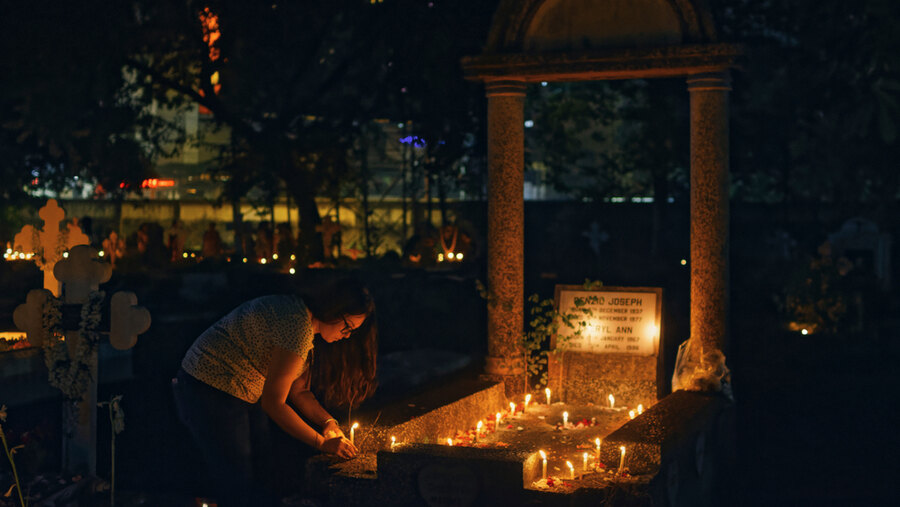At first glance, it appears to be an array of Mughal-style tombs complete with domes, chhatris and arches and probably the last thing one would consider it to be a Christian cemetery.
The necropolis
Located near Bhagwan Talkies in Agra, the 400-plus-year-old Roman Catholic in Agra is a unique cemetery, where the early Christian settlers of north India were buried under elaborately ornate Mughal-style tombs, some of which were crude replicas of the great Taj.
William Dalrymple mentions about the cemetery in his best-selling book White Mughals, “Here they lie side by side, buried in one of the strangest necropolises in Asia, filled with line upon line of small Palladianised Taj Mahals,…”

The cemetery dates back to the time of Akbar (reign: 1542 – 1605) and is the resting place of mercenaries and traders from far-off lands. It was initially used by the Armenian traders, who practised Christianity. Later, it was predominately used by the Catholic Christians from France, Holland and Italy. Even the English Protestant Christians have their share of graves in the cemetery. The epitaphs come with an assortment of languages, which include Persian, Armenian, Italian and English. Among the tombs that stand out in the Roman Catholic Cemetery is the Red Taj, housing the mortal remains of the Dutch mercenary, John William Hessing.
John William Hessing (1739 – 1803) and his Red Taj
Hessing first came to India (via Ceylon) in 1757 and initially worked for the Dutch East India Company. In 1784, he joined the Scindias and served under Mahadaji Scindia (reign: 1768-1794) and his son Daulat Rao Scindia (reign: 1794-1827). He served as the commander of Agra Fort till his death on July 21, 1803. The tomb was commissioned by his wife Anna Derridon, a Eurasian woman from Pondicherry. Hessing’s mausoleum is a red sandstone structure made on the lines of the great Taj. The famous Dutch anthropologist, Bauke van der Pol, mentions in his book The Dutch East India Company in India, “Nowhere in the whole India will you come across a large or more impressive mausoleum for a European than the one of Jan Willem Hessing. It is often referred to as the Red Taj Mahal, though it is also known as Miniature Taj or the Baby Taj.”
The tomb towers to a height of 14m (less than 1/5th the height of Taj) but has striking structural resemblance apart from the four corner minars. Like the Taj, the tomb is located on a high plinth approached by a flight of stairs. The interior houses the false grave (the original grave is inside the plinth) with an elaborate epitaph.
Other graves: The cemetery houses several graves of notable persons and families. Here are a few of them
1. Eliis Family
2. Walter Reinhardt Sombre, aka Samru
3. Marty’s Chapel
4. John Mildenhall
Eliis Family Tomb
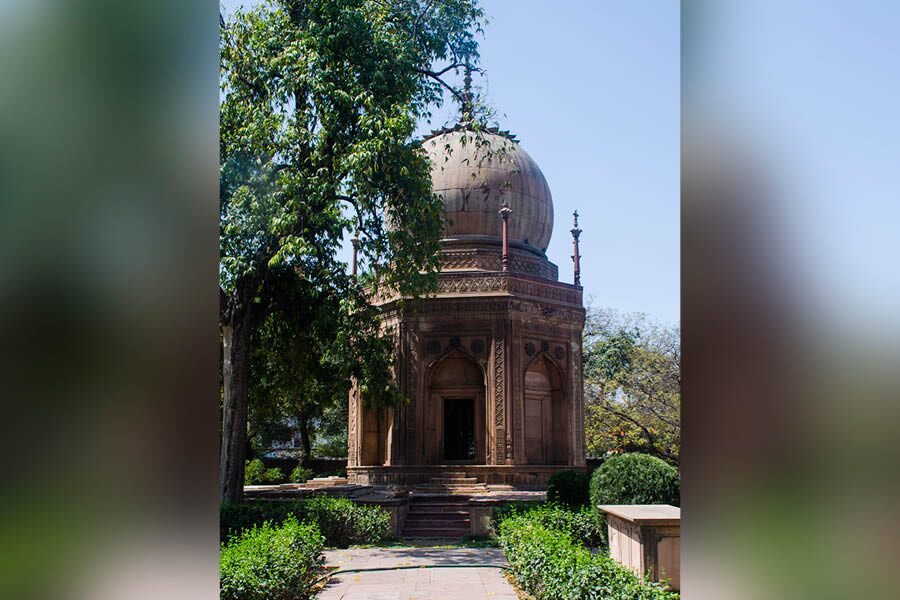
The Eliis family tomb. History doesn’t mention much about this family but no wonder they did have funds to build this magnificent mausoleum. .
This elegant slender octagonal tomb topped with a bulbous dome houses the mortal remains of Francis Eliis, who died in 1868. The sandstone mausoleum has elaborate ornamentation complete with lattice screen. It stands on a high plinth housing seven more graves of the Eliis family. Sadly, history doesn’t mention much about this family but no wonder they did have funds to build this magnificent mausoleum.
Tomb of Walter Reinhardt Sombre, aka Samru (1723 – 78)
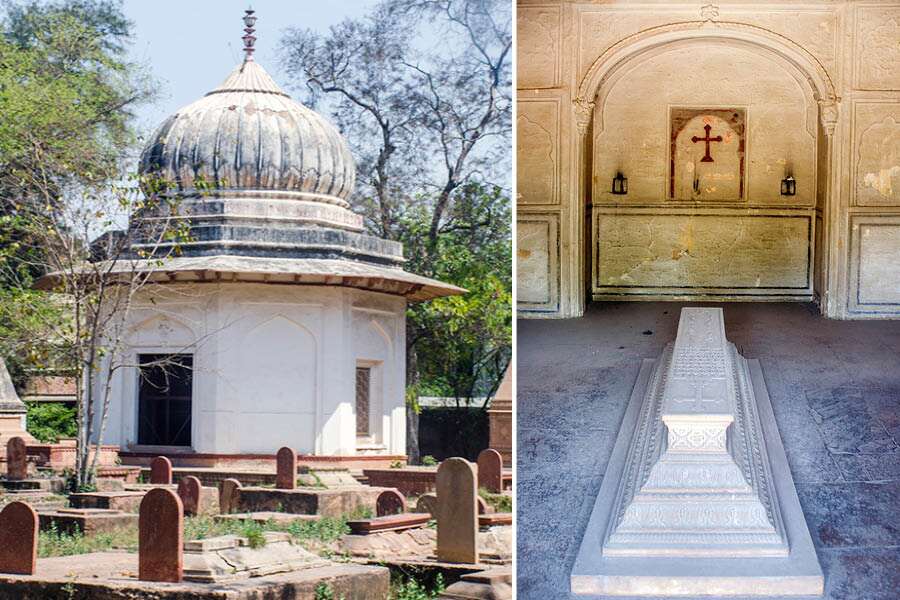
The tomb of Walter Reinhardt Sombre, aka Samru, and its interiors.
Walter Reinhardt Sombre, aka Samru was another soldier of fortune of probably French origin. He served as a mercenary under the Bengal Nawab Mir Qasim, where he earned the nickname of Samru. Later, he would move westwards and formed a mercenary army of Jats who would enter the service of the later Mughals. In the mid-1760s, he married a nautch girl, who later came to be known as Begum Samru. He died in Agra on May 4, 1778, and his wife took control over his mercenary army. Today, his mortal remains lie inside a domed octagonal tomb. The tomb also houses another grave.
Marty’s Chapel
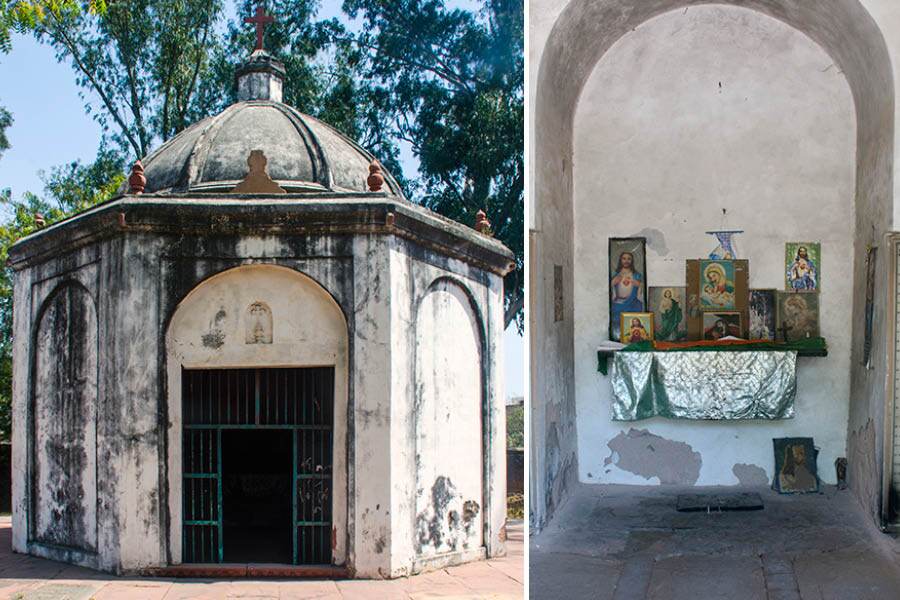
Marty’s Chapel and its interiors are visited by local Christians who light candles and incense sticks before a small alter housing several photos of Jesus and Mary.
This is also an octagonal-domed tomb and dates back to 1611 and is the oldest standing structure of the cemetery. The tomb houses the mortal remains of Armenian merchants and priests settled in Agra. Among the first to be buried in the tomb was Khoja Mortinepus (hence the name Marty’s Chapel), an Armenian merchant, who died in Agra in 1611. Today, the tomb is visited by local Christians who light candles and incense sticks before a small alter housing several photos of Jesus and Mary.
Grave of John Mildenhall (1560 1614)
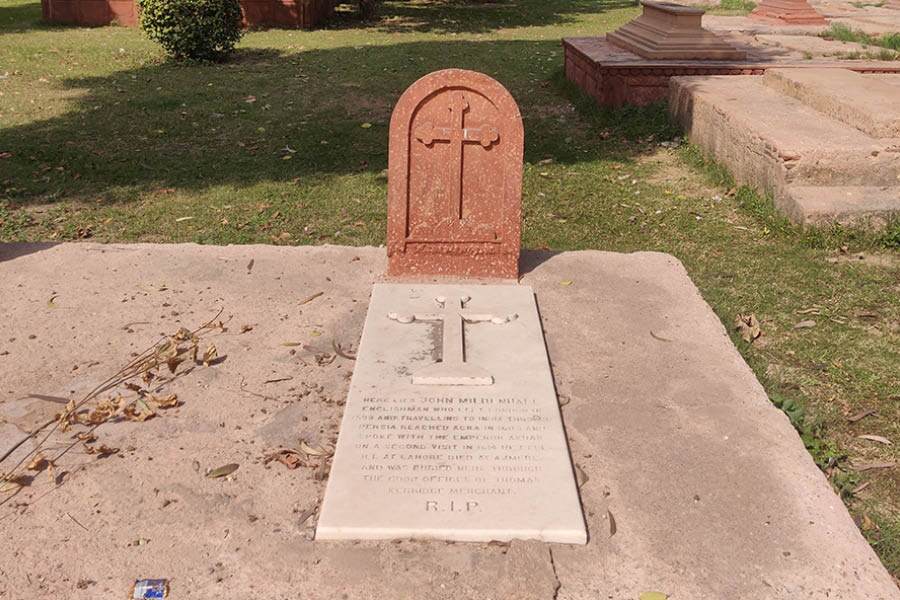
There is no tomb but a simple grave for John Mildenhall with a marble epitaph and a sandstone headstone. Swati Jain
John Mildenhall is no famous official of British India history but he holds the unique distinction of being the first Englishman to be buried in India. He was an explorer and adventurer and one of the first to make an overland journey to India. He was the self-styled ambassador of Queen Elizabeth I who visited Agra in 1603. In 1614, during his second visit to India, he fell ill in Lahore and died in Ajmer. He was laid to rest in the Catholic Cemetery in Agra, thus becoming the first Englishman to be buried in Indian soil. There is no tomb but a simple grave with a marble epitaph and a sandstone headstone.

